Speakers
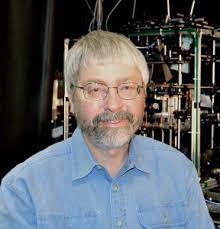
Poul Jessen, University of Arizona
Poul S. Jessen is a Professor of Optical Science and Chair of Quantum Information and Control in the College of Optics at the University of Arizona in the USA.
Prof. Jessen received his BSc and MS degrees in Chemistry and Physics from the University of Aarhus in 1987 and 1989, respectively. As a PhD student he joined the group of Dr. William D. Phillips at the US National Institute of Standards and Technology, where he worked on the first experiment to observe quantized atomic motion in Optical Lattices. For this he received his PhD in Physics from the University of Aarhus in 1993. Prof. Jessen joined the Optical Sciences Center (now College of Optical Sciences) at the University of Arizona as an assistant professor in 1993. He is a fellow of the American Physical Society, and a founding member of the Center for Quantum Information and Control.
Prof. Jessen’s research interests lie at the intersection of experimental atomic physics, quantum optics, and quantum information science. Recent and current projects include quantum control and measurement of single and collective atomic spins, quantum control of atoms in optical lattices, light-matter quantum interfaces based on atoms in optical nanofiber traps, spin squeezing and its use in quantum metrology, quantum tomography, quantum chaos, and quantum simulation.
Title: Open and Closed – Two Paths to Quantum Control
Abstract: Quantum processors of increasing size and sophistication are now available in several hardware implementations and there is hope they may prove useful for classically hard tasks such as quantum simulation. However, their supposed quantum advantage is fundamentally tied to accurate control of entanglement in quantum many body system. It has long been known that such systems also support quantum chaos, in the sense that their time evolution is exponentially sensitive to control errors. This sets up two separate notions of complexity, one related to the nature of the evolving quantum state, and another related to the nature of the system dynamics. Indeed, for a quantum processor operating without error correction, one can expect an inverse relationship between the accessible Hilbert space and the length of time one can meaningfully compute, with those properties playing a role analogous to the width and depth of a quantum circuit. So far, most research has been focused on scaling up the number of qubits, with less attention paid to the fidelity of the output state as one seeks to increase the useful computational depth.
In this presentation I will introduce a unique platform for quantum control and quantum simulation, based on accurate control in a 16-dimensional Hilbert space (isomorphic to 4 qubits) associated with the spins of individual Cs atoms [1]. While not scalable, this small, highly accurate quantum (SHAQ) processor offers tradeoffs that are uniquely suited to the study of dynamical complexity in time. I will briefly introduce the paradigm of optimal control and how it can be optimized for different scenarios, and then discuss applications of the SHAQ processor as a testbed for quantum control and simulation [2,3] on the edge of chaos. If time allows, I will also share a few ideas and results from a project aimed at quantum control and simulation with a different kind of system, consisting of a large collective spin subject to continuous quantum measurement and real-time feedback [4].
[1] B. E. Anderson, H. Sosa-Martinez, C. A. Riofrio, I. H. Deutsch, and PSJ, Phys. Rev. Lett. 114, 240401 (2015).
[2] N. K. Lysne, K. W. Kuper, P. M. Poggi, I. H. Deutsch, and PSJ, Phys. Rev. Lett 124, 230501 (2020).
[3] P. M. Poggi, N. K. Lysne, K. W. Kuper, I. H. Deutsch, and PSJ, PRX-Quantum 1, 020308 (2020).
[4] M. H. Muniz-Arias, P. m. Poggi, PSJ. And I. H. Deutsch, Phys. Rev. Lett. 124, 110503 (2020).
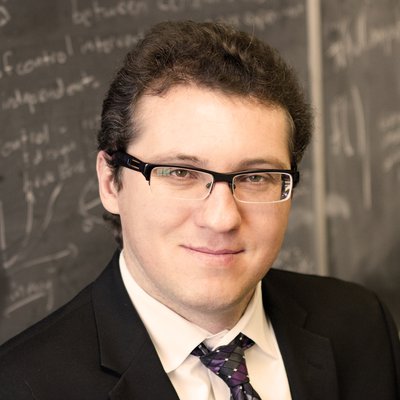
Adilson Motter, Northwestern University
Motter is the Morrison Professor of Physics at Northwestern University. Prior to joining the Northwestern faculty, he held positions as Director’s Postdoctoral Fellow at the Center for Nonlinear Studies of LANL and as Guest Scientist at the Max Planck Institute for the Physics of Complex Systems. He received his Ph.D. in 2002 and joined Northwestern in March 2006, where he holds an Endowed Professorship since 2011. Motter’s honors include a Sloan Research Fellowship, an NSF CAREER Award, the Erdős-Rényi Prize in Network Science, and a Simons Foundation Fellowship. He is a Fellow of the American Physical Society, Network Science Society, and American Association for the Advancement of Science. His research is focused on the dynamical behavior of complex systems and networks. Group webpage: http://dyn.phys.northwestern.edu/.
Title: Control and controllability in complex networks of coupled dynamical systems.
Abstract: An increasing number of complex systems are now modeled as large networks of coupled dynamical entities. Nonlinearity and high-dimensionality are hallmarks of the dynamics of such networks but have generally been regarded as obstacles to control. In this presentation, I will discuss advances on mathematical and computational approaches to control high-dimensional nonlinear network dynamics under general constraints on the admissible interventions. The presentation will be focused on classical networks but will also benefit from some comparisons with quantum scenarios of potential interest.
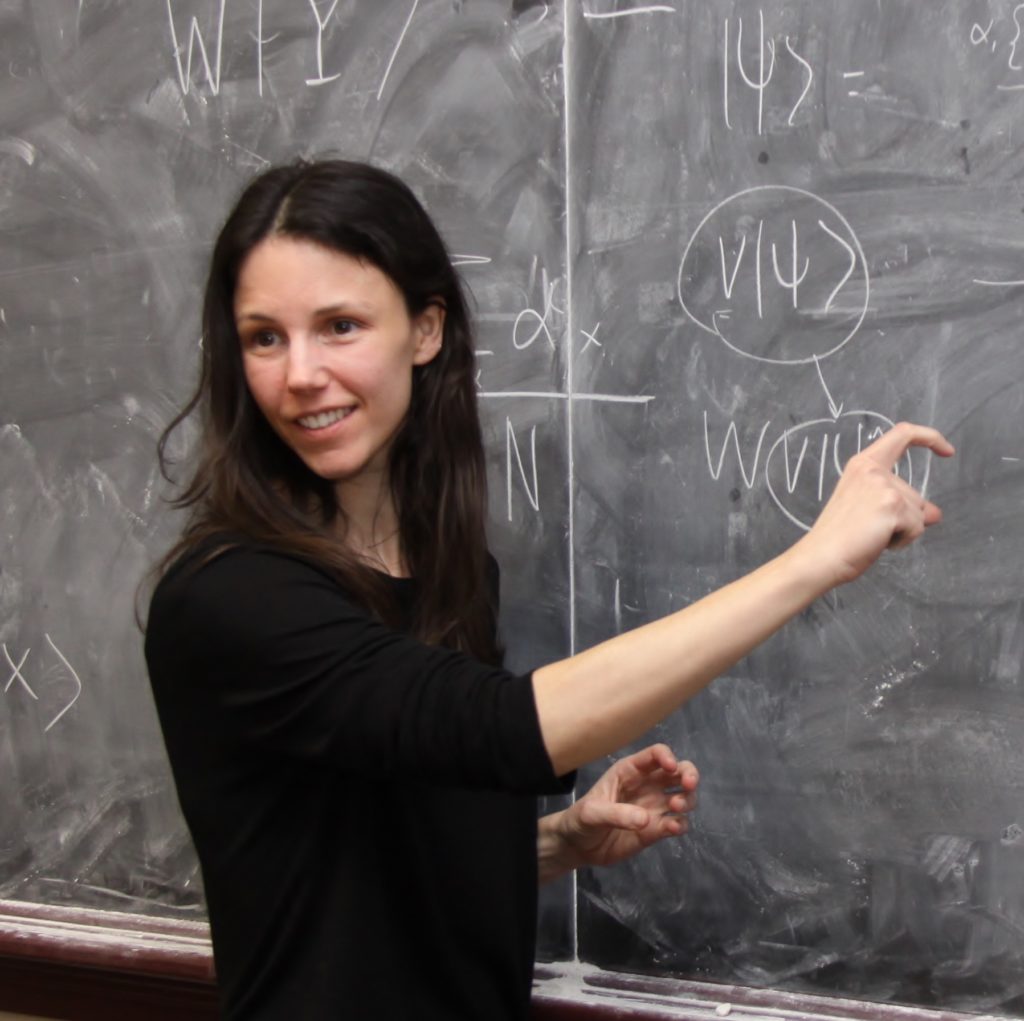
Sophia Economou, Virginia Tech
Sophia Economou is a Professor of Physics and the Hassinger Senior Fellow of Physics at Virginia Tech. She focuses on theoretical research in quantum information science, including quantum computing, quantum communications, and quantum simulation algorithms. She is a theoretical physicist working at the interface of condensed matter physics and quantum information science. Prior to Virginia Tech, she was a staff Research Physicist at the Naval Research Lab (2009-2015). She earned her bachelor’s degree in Physics from the University of Crete in Greece in 2000 and her PhD from the University of California, San Diego in 2006. Her interests include spin physics in nanostructures, quantum optics, superconducting qubits, quantum control, and decoherence.
Title: Control of emitters and memories for quantum networks
Abstract: Quantum control is a crucial element of any quantum technology. For quantum computing, quantum gates of high fidelity are required in order to achieve quantum error correction and scalability. For quantum networks, local nodes typically contain both matter-based quantum memories and quantum emitters. Both types of systems need to be controlled individually, and so do their interactions. This talk will discuss the need for and required levels of control in quantum networks. There will be a focus on optically active spin qubits such as diamond and silicon carbide defects, which are currently under intensive development as building blocks of quantum networks.
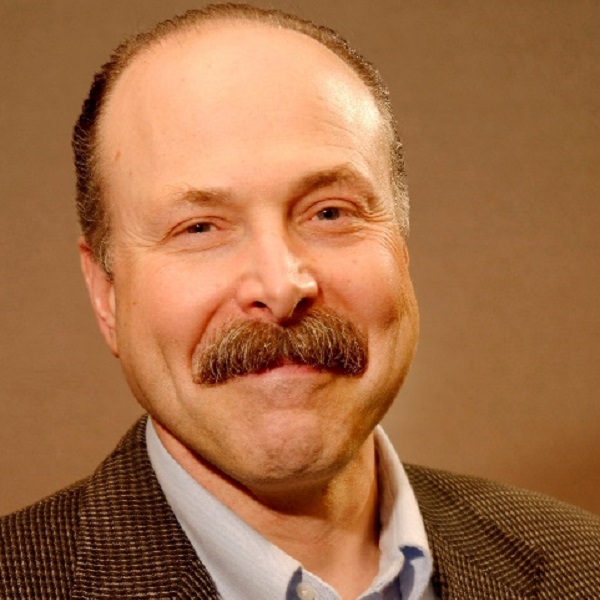
David D. Awschalom, University of Chicago
David Awschalom is the Liew Family Professor in Spintronics and Quantum Information in the Pritzker School of Molecular Engineering, a professor of Physics, and director of the Chicago Quantum Exchange. He also holds a senior scientist and Quantum Group Leader position at Argonne National Laboratory. His research in quantum spintronics involves understanding and controlling the spins of electrons, ions, and nuclei for fundamental studies of quantum systems, as well as potential applications in computing, imaging, and encryption.
Title: Engineering quantum technologies with spins in semiconductors
Abstract: Individual defects in diamond, silicon carbide, and other wide-gap semiconductors have attracted interest as they possess an electronic spin state that can be employed as a solid-state quantum bit from cryogenic to ambient temperatures. These systems have a built-in optical interface in the visible and telecom bands, retain their coherence over millisecond timescales, and can be polarized, manipulated, and read out using a simple combination of light and microwaves. We discuss recent single qubit quantum control measurements in silicon carbide including gigahertz manipulation, single nuclear spin quantum memories, entangled quantum registers, and advances in extending the quantum coherence in both commercial and custom CVD-grown electronic materials.
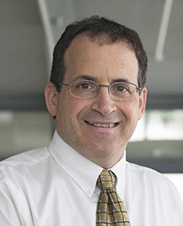
Eytan Modiano, Massachusetts Institute of Technology
Eytan Modiano is Professor in the Department of Aeronautics and Astronautics and Interim Director of the Laboratory for Information and Decision Systems (LIDS) at MIT. Prior to Joining the faculty at MIT in 1999, he was a Naval Research Laboratory Fellow between 1987 and 1992, a National Research Council Post Doctoral Fellow during 1992-1993, and a member of the technical staff at MIT Lincoln Laboratory between 1993 and 1999. Eytan Modiano received his B.S. degree in Electrical Engineering and Computer Science from the University of Connecticut at Storrs in 1986 and his M.S. and PhD degrees, both in Electrical Engineering, from the University of Maryland, College Park, MD, in 1989 and 1992 respectively.
His research is on modeling, analysis and design of communication networks and protocols. He received the Infocom Achievement Award (2020) for contributions to the analysis and design of cross-layer resource allocation algorithms for wireless, optical, and satellite networks. He is the co-recipient of the Infocom 2018 Best paper award, the MobiHoc 2018 best paper award, the MobiHoc 2016 best paper award, the Wiopt 2013 best paper award, and the Sigmetrics 2006 best paper award. He was the Editor-in-Chief for IEEE/ACM Transactions on Networking (2017-2020), and served as Associate Editor for IEEE Transactions on Information Theory and IEEE/ACM Transactions on Networking. He was the Technical Program co-chair for IEEE Wiopt 2006, IEEE Infocom 2007, ACM MobiHoc 2007, and DRCN 2015. He had served on the IEEE Fellows committee in 2014 and 2015, and is a Fellow of the IEEE and an Associate Fellow of the AIAA.
Title: Learning Algorithm for Optimal Network Control
Abstract: We discuss the role of learning in optimal network control, with focus on network stability in networks with uncooperative nodes, whose dynamics cannot be controlled and only sporadically estimated. It is well known that the MaxWeight algorithm can stabilize the network when all of the nodes are fully cooperative. We show that MaxWeight fails when some of the nodes are uncooperative, and introduce Tracking-MaxWeight (TMW), which enhances the original algorithm with an explicit learning of the policy used by uncooperative nodes. We show that TMW achieves stability as long as the state of uncooperative nodes can be sporadically estimated, and characterize the impact of infrequent and erroneous estimates on stability.
Next, we consider the scenario where uncontrollable nodes use a queue-dependent policy and seek to minimize queue backlogs (network delays). We formulate the problem as an MDP with unknown queueing dynamics, and propose a new reinforcement learning algorithm, called Truncated Upper Confidence Reinforcement Learning (TUCRL), that can achieve optimal performance. Finally, we propose a new framework for optimal reinforcement learning for queueing networks with unbounded state-spaces.
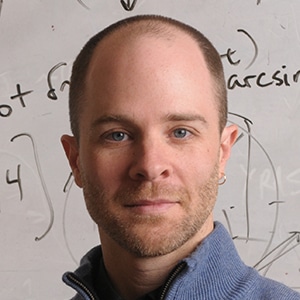
Lincoln Carr, Colorado School of Mines
Professor Carr has a broad range of theoretical interests covering many disciplines, using an even balance of analytical and numerical methods, and often work closely with experimentalists. Subjects he has worked on include entangled quantum dynamics, quantum phase transitions, and ultracold quantum gases; artificial lattice systems, from optical lattices to graphene to millimeter waves; solitons, vortices, chaos, fractals, and other nonlinear phenomena in nonlinear Schrodinger and nonlinear Dirac equations as realized in Bose-Einstein condensates, spin waves in ferromagnetic films, and optics; the quark-gluon plasma at CERN and RHIC; and a variety of topics in mathematical physics and the physics of complex systems. Professor Carr notes he is honored to mentor an intense, active, diverse research group averaging 15 persons and including undergraduates, MS and PhD graduate students, and post-docs.
Title: Understanding Quantum Decoherence with Ultracold Molecule Quantum Simulator Interaction Networks: From Field Control to Reservoir Engineering
Abstract: Ultracold molecules are a key quantum simulator architecture [1]. They are trapped in optical lattices or optical tweezers and naturally give rise to multi-layer complex networks via long-range dipole-dipole interactions. These interaction networks are highly state-dependent and can be controlled via external electric and magnetic fields [2]. Molecules have been measured to have extremely long coherence times of milliseconds to seconds. Because ultracold molecules also exist in tightly controlled environments, reservoir engineering can be used to actively study decoherence. This talk will present the building blocks of a proposed study on the interface between controlled quantum elements in the form of ultracold molecules [2], their interaction networks [3], and their internal decoherence (or dephasing) and external decoherence with engineered reservoirs [4]. A key preliminary result is the number of qubits one can classically simulate for open quantum systems is reduced by a factor of 4 due to entanglement incurred by the interaction network, in turn showing quantum advantage for 12-13 qubits, or even a few qudits, for open quantum systems as opposed to closed ones. Moreover, small finite scaling studies indicate a subradiant effect in which, counter-intuitively, more molecules actually limits decoherence [4]. Thus, our results encourage open quantum system exploration in noisy intermediate-scale quantum technologies, with ultracold molecules presenting an ideal physical architecture.
References:
- Ehud Altman, et al., “Quantum Simulators: Architectures and Opportunities,” Physical Review X Quantum, v. 2, p. 017003 (2020), https://doi.org/10.1103/PRXQuantum.2.017002
- L. D. Carr, David DeMille, Roman V. Krems, and Jun Ye, “Cold and Ultracold Molecules: Science, Technology, and Applications,” New J. Phys. v. 11, p. 055049 (2009), http://dx.doi.org/10.1088/1367-2630/11/5/055049
- Bhuvanesh Sundar, Mattia Walschaers, Valentina Parigi, and Lincoln D Carr, “Response of quantum spin networks to attacks,” J. Phys. Complexity, in press (2021), https://doi.org/10.1088/2632-072X/abf5c2
- Daniel Jaschke, Lincoln D. Carr, and Ines de Vega, “Thermalization in the quantum Ising model—approximations, limits, and beyond,” Quantum Science and Technology 4, 034002 (2019), https://doi.org/10.1088/2058-9565/ab1a71
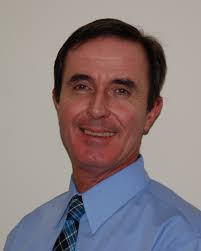
Edmond Jonckheere, University of Southern California
Edmond A. Jonckheere received his “Electrical Engineer” degree from the University of Louvain, Belgium, in 1973, the Dr.-Eng. degree in Aerospace Engineering from the Université Paul Sabatier, Toulouse, France, in 1975, and the Ph.D. degree in Electrical Engineering from the University of Southern California, Los Angeles, in 1978. From 1973 to 1975, he was a Research Fellow of the European Space Agency. In 1979, he was with the Philips Research Laboratory, Brussels, Belgium. In 1980, he returned to the University of Southern California, where he is currently a (full) Professor of Electrical Engineering and Mathematics, a member of the Center for Applied Mathematical Sciences (CAMS) and a member of the Center for Quantum Information Science and Technology (CQUIST). Dr. Jonckheere has had short term visiting appointments with the Max-Planck-Institute, Göttingen, Germany, the Australian National University, Canberra, Australia, the University of Namur, Belgium, Cardiff University, Wales, UK, and Swansea University, Wales, UK. He has had consulting affiliations with Lockheed-Martin, the Aerospace Corporation, and Honeywell. Dr. Jonckheere is a Life Fellow of the Institute of Electrical and Electronics Engineers (IEEE). His current research interests include conventional versus quantum control, adiabatic quantum computations, wireless networking, and the power grid.
Title: Robust control of quantum networks down to fundamental limitations
Abstract: Quantum control has the ambition to get down to accuracies never contemplated before. So far emphasis has been put on physical limitations, e.g., Planck length in quantum optical control, but only very recently has it been realized that the spectacular achievements of the universal science of control brings, on the flipside, its own limitations. Our query is whether quantum physics offers loopholes to defeat the fundamental limitations imposed by classical physics (or classical geometry?) in such systems as feedback amplifiers as articulated by Bode, Horowitz, and many followers. As theoretical prototypical platform, we will consider spintronic networks with the objective of “routing” excitation-encoded information for an initial to a terminal spin. Following classical lines, the closed-loop fidelity error will be quantified by a “sensitivity function” that does not architecturally match the one of Bode upon which the fundamental limitations rest. It will be shown that a major classical-quantum discrepancy stems from the presence of the global phase factor in the quantum sensitivity function, which needs to be reinterpreted in the context of projective geometry. Removal of the global phase factor will allow us to examine the quantum-classical discrepancies—with early evidence of the possibility to have minimum fidelity error coexisting with minimum sensitivity of fidelity error, contrary to classical expectations. A data base of results was developed where fidelity and sensitivity of fidelity were shown to be concordant using nonparametric rank ordering tests. Finally, it will be shown that classicality, that is, discordance between fidelity and sensitivity of fidelity, reappears under decoherence.
(This is joint work with S. Schirmer (Swansea Univ., UK), F. Langbein (Cardiff Univ., UK), and C. Weidner (Aarhus University, Denmark), partially supported by NSF IRES 1829078.)
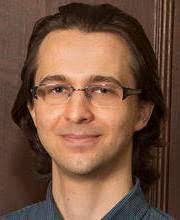
Stefan Krastanov, Massachusetts Institute of Technology
Dr. Krastanov’s research interests center on the control and calibration of near term quantum hardware, with the occasional use of machine learning techniques towards that goal. He is currently a postdoctoral fellow at MIT.
Stefan obtained his doctorate in physics in Liang Jiang’s group at the Yale Quantum Institute and his undergraduate degree at ENS, Lyon, France. He spends much of his free time on hobby electronics and STEM outreach, frequently mixing the two by helping middle schoolers build pretty light-emitting gadgets and learn how to use physics and engineering to bend the universe to their will.
Title: The many layers of control and parameterization: from closed-form solutions to machine learning
Abstract: Since the 90s our community has been developing methods for the complete control of various quantum states. Initially we started with explicit constructions prescribing how to compile an arbitrary unitary operation out of the available control fields, but over the years optimal control, and its more recent reincarnation — machine learning, have become popular, providing much lower resource overhead. In this talk we will discuss the evolution of these techniques, including in-depth examples from cavity-QED and nonlinear optics. At the end we will touch upon how we can keep some of the benefits of the machine learning approaches, without sacrificing the interpretability of closed-form control constructs.
references:
– (1996) Arbitrary Control of a Quantum Electromagnetic Field
10.1103/PhysRevLett.76.1055
– Universal Control of an Oscillator with Dispersive Coupling to a Qubit
arXiv:1502.08015
– Implementing a Universal Gate Set on a Logical Qubit Encoded in an Oscillator arXiv:1608.02430
– Room-Temperature Photonic Logical Qubits via Second-Order Nonlinearities arXiv:2002.07193
– Efficient cavity control with SNAP gates arXiv:2004.14256
– Stochastic Estimation of Dynamical Variables arXiv:1812.05120
– Unboxing Quantum Black Box Models: Learning Non-Markovian Dynamics
arXiv:2009.03902

